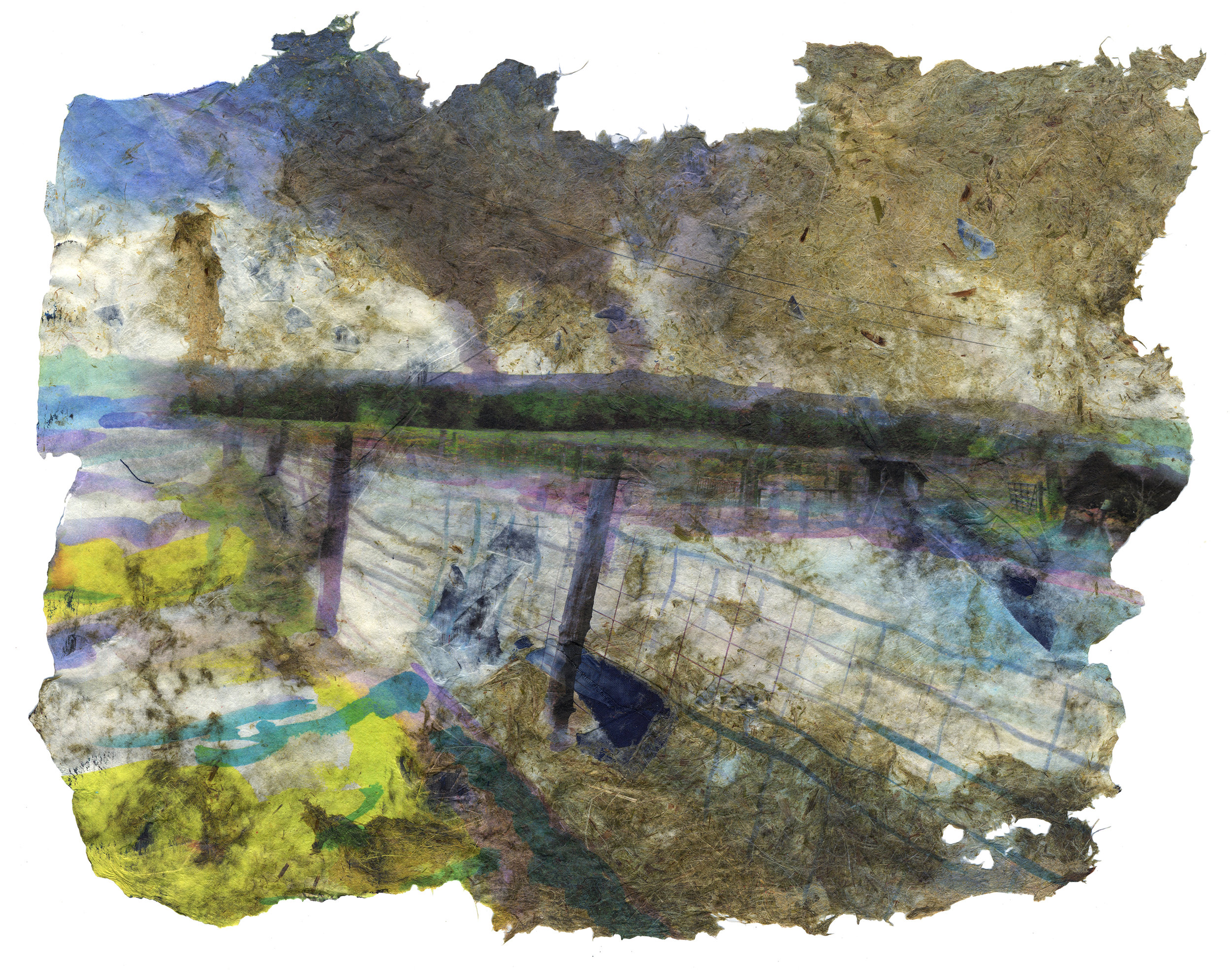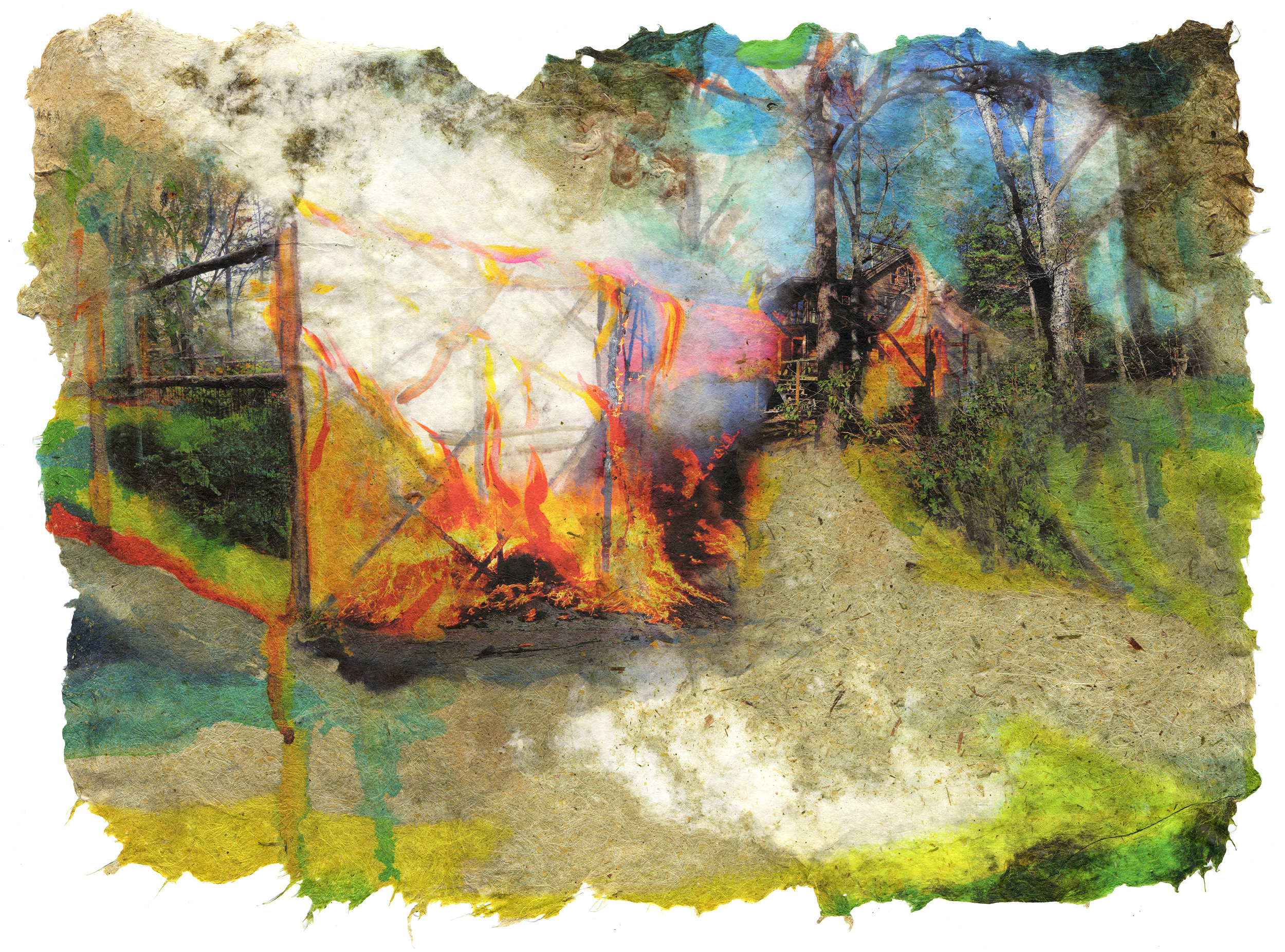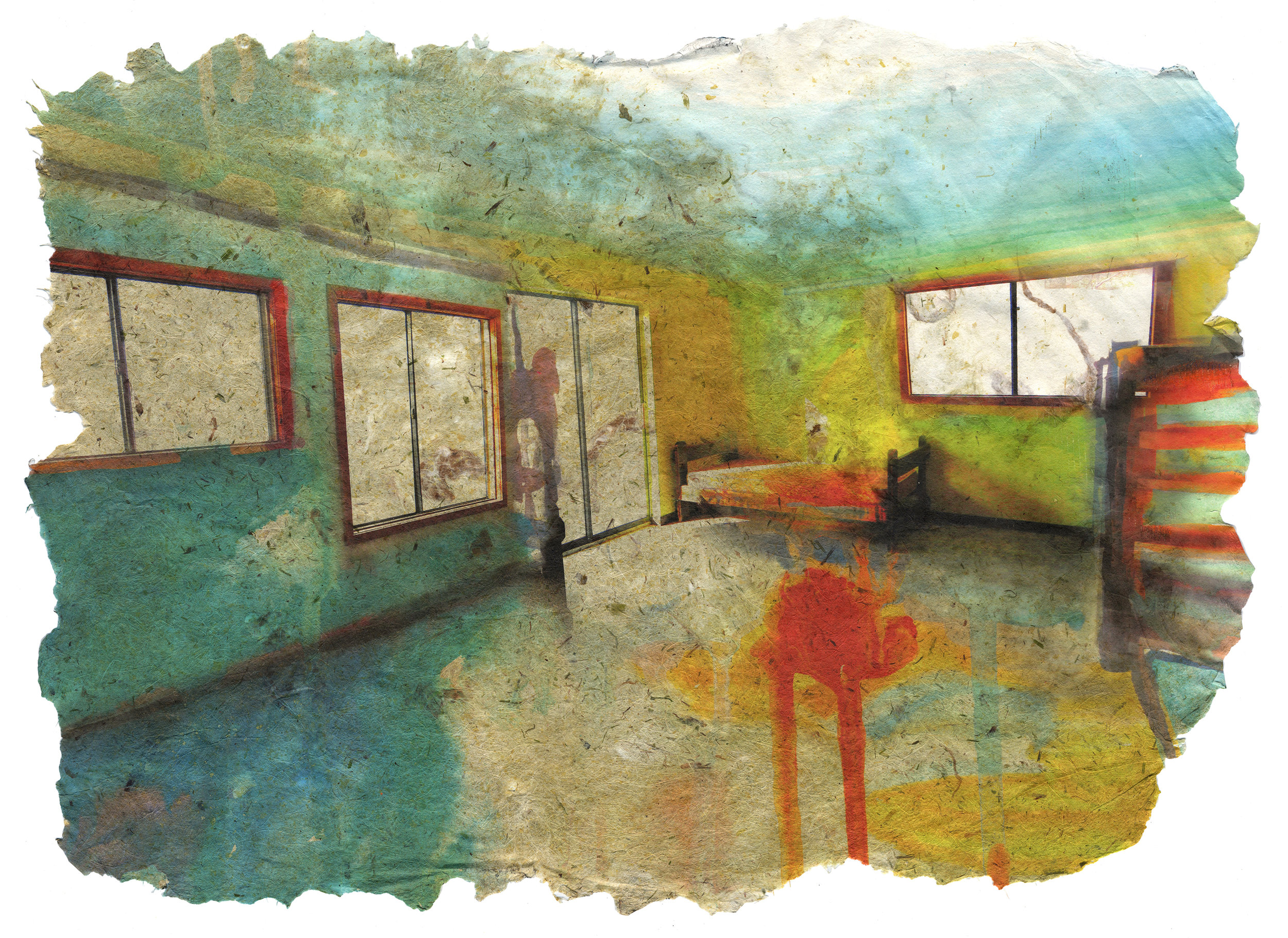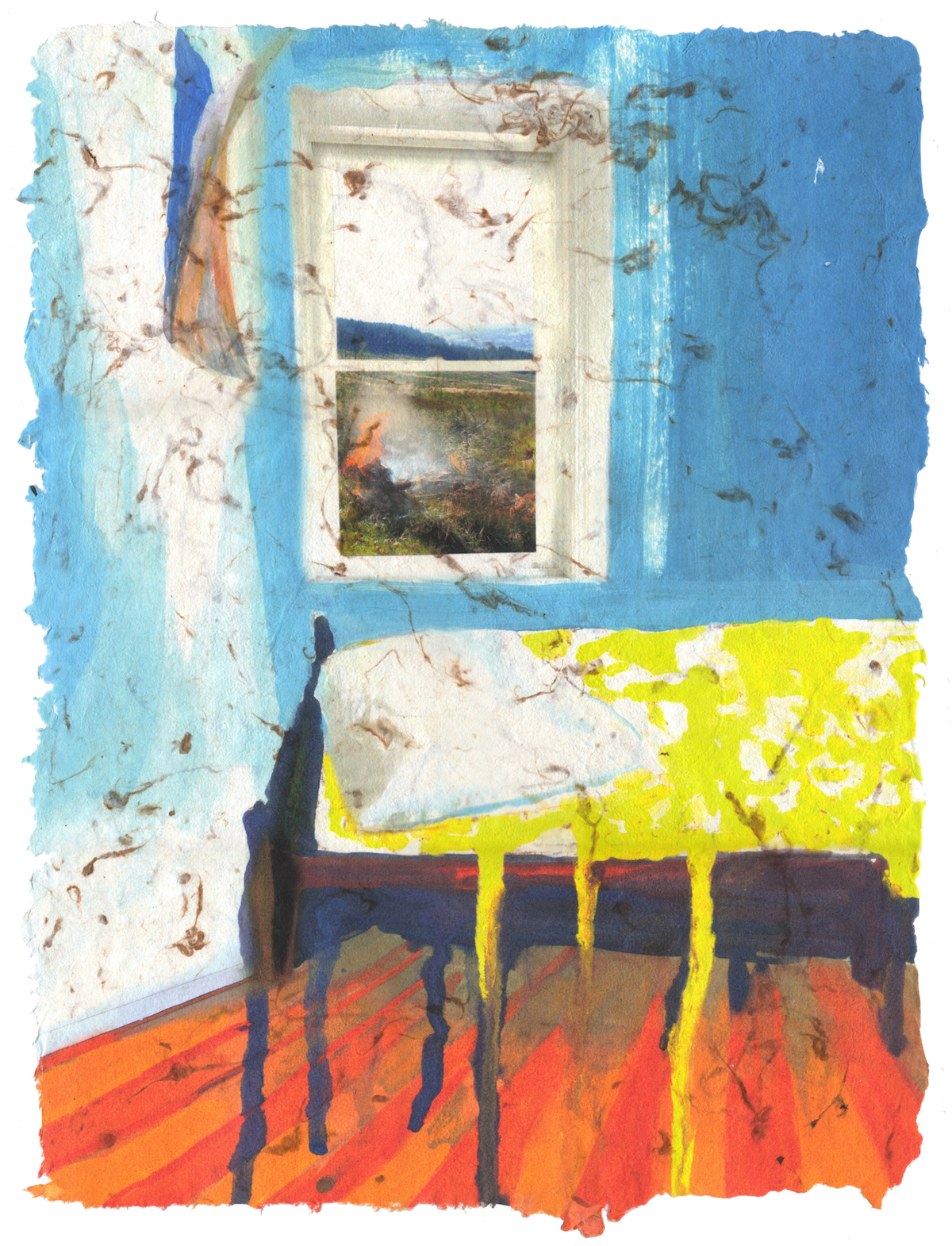Traces Remain, 2017
On view at Historic Arkansas Museum May 12th - August 6th 2017
Carey Voss, Curator at Historic Arkansas Museum, writes:
"Melissa Cowper-Smith is enamored with memory, with forgetting, with the fleeting nature of everything around us. Her recent work is filled with markers of anxiety: abandoned building projects, roads made impassable by fire, domestic spaces empty of inhabitants, a sense of urgency and constant movement. Bright, saturated hues reminiscent of Color Field painting and sinuous gestural marks may initially turn the viewer’s attention toward surface and form, but delve deeper into the layers of atmospheric space created by collaging photographs digitally, and the work as a whole pushes toward an exploration of content. Melissa’s multimedia art is trapped between worlds: the past and its love of analog processes and handwork, and the present/future with its preference for the slick digital surfaces of high-definition photography and video. Cowper-Smith’s 2D pieces begin as acrylic paintings collaged with photographs and manipulated using specialized computer software. The resulting images are then pigment-printed onto paper made by hand from cotton and other plant fibers grown at Wildland Gardens, Melissa’s eco-farm. Each still image, each print, represents only a single moment in Cowper-Smith’s stop-action videos, multimedia projections that play with the representation of time’s passage and the ephemeral quality of memory."
Convention Fire (detail), 2017, Pigment print on handmade paper (cotton, daylily, hosta, bamboo, yucca), 15 1/2 x 21 inches
The Way We Came (detail), 2017, Pigment print on handmade paper (cotton, daylily, bamboo, hosta, yucca, and indigo dyed cloth), 15 x 20 inches
In these recent prints there are paths, roads, doors, and windows. Invitations to travel through the represented space. Yet, the movement is impeded. Fences, fires, trees, and smoke block the way. These are unnavigable places punctuated with shifting photographic perspectives, painted drips and the swirling texture of paper fibers.
In the video, the ceaseless stop-motion movement reminds you that time is passing quickly. There are glimpses of formation and destruction as the trees, architecture, and land expand, move, and sink away.
In both the prints and related video, the imagery represents a combination of natural landscapes and human architecture. There are photographs and paintings of rooms, buildings, chairs, beds, tables and debris. The dripping paint is ominous- referencing body fluids, leaks, rain, and graffiti. The spaces are empty of people- making them fearful. Where has everyone gone? What has happened?
There are also images of trees, clouds, and grass. The paper itself is linked to nature- being made directly from plants. The paper was formed by hand, including the cultivation, collection and preparation of the fibers. Some of the prints include pieces of natural indigo dyed cotton cloth, linen cloth and threads. This points to connections between clothes, the body for which they are made, and the natural sources from which they originate. The works asks you to integrate your thoughts of nature and human activity. We too are part of the natural world.
The work expresses our collective anxiety about the future. It points to our fear of climate change, deforestation, natural disasters, migration, war, and human and animal extinction.





















